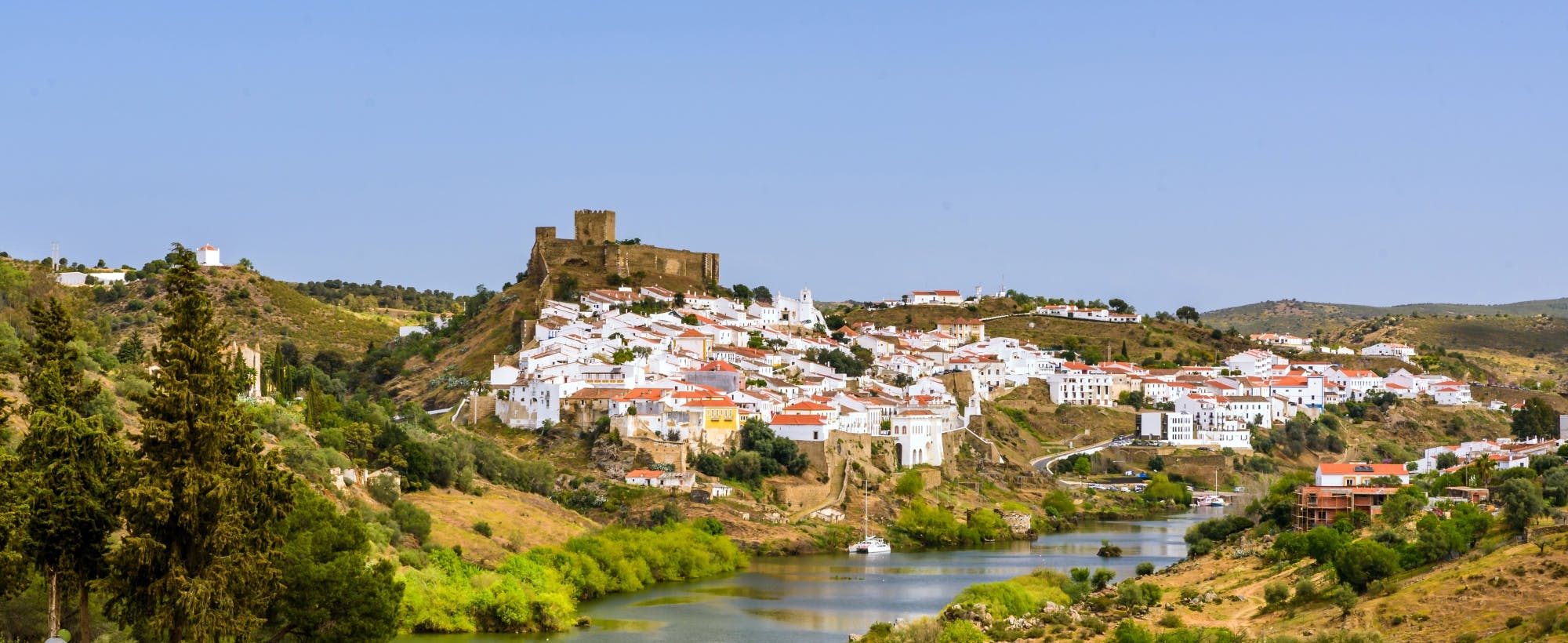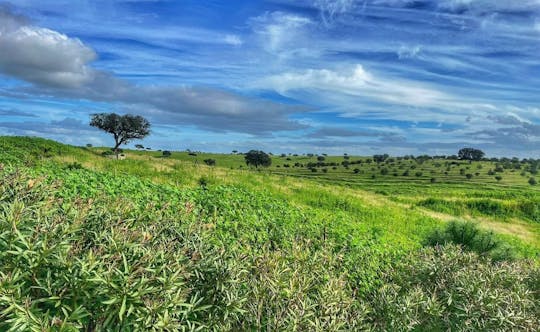Où aller
Portugal
Découvrir Mértola
The charm of Portugal's Alentejo region is undeniable, and the historic town of Mértola is no exception. It’s been nominated for the UNESCO World Heritage Site list and it’s easy to see why, with Roman archaeological sites littering the town’s cobbled streets. Mértola’s Alentejo cuisine is a treat for the tastebuds, look out for hearty breadcrumb and lamb stews that’re usually washed down with quality local red wines. Perched high above the River Guadiana, the scenic town boasts a mix of Islamic and Christian architecture, a backdrop of green, rolling hillsides and a laidback atmosphere that’s all about slowing down and soaking up the Portuguese sun.Top three things to do in Mértola1. Explore the Medieval Mértola CastleYou’ll find Mértola Castle dominating the skyline above the town, and it’s a must-visit for history buffs. It was built by the Moors in the 13th-century and offers panoramic views over the town and surrounding countryside. The city walls encircle the centre of the town and the castle’s keep towers above on a rocky outcrop. As you wander around its ancient battlements and towers, you'll feel like you've stepped back into a time of knights and kings.2. Visit the Church of Nossa Senhora da AnunciaçãoThis former mosque turned church is a testament to Mértola's diverse cultural history. The outside of the Church of Nossa Senhora da Anunciação stands out with its distinctive whitewashed walls and bell tower. Step inside, however, and you'll find a simple yet beautiful design, featuring a preserved Islamic-style vaulted ceiling and horseshoe arches alongside typically Christian elements, like the altar and facade. 3. Wander around the Casa RomanaFor a glimpse into Mértola's Roman past, head to Casa Romana. This well-preserved Roman house is decked out with intricate mosaics, bathhouses and courtyards, providing a snapshot into how the Romans lived more than two thousand years ago. It’s part of a network of sites belonging to Mértola Museum that have everything from Islamic art and Christian relics to Roman artefacts and modern local crafts.



